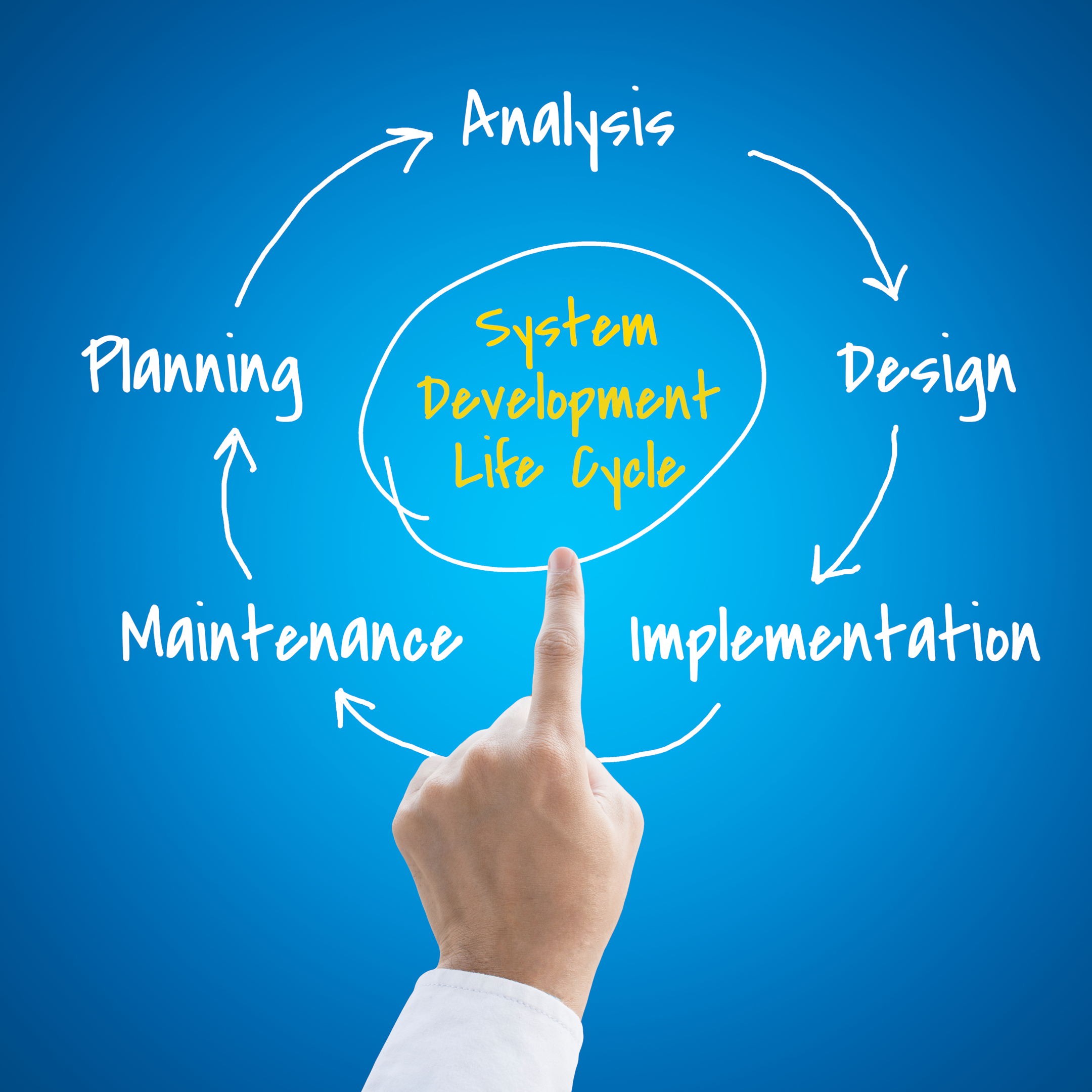Mastering Software Development: A Guide to Excellence in Coding.

Gareth Smith

Software engineering technologies are always evolving but your next custom software project will only be as good as the development team you choose to develop it. For this reason it is essential that software development best practices are being utilised to ensure that your development team can deliver high-quality software that meets the end-users’ requirements, is delivered on time and within budget and meets the certain software development standards. Developing software is a complex process that requires careful planning, execution, and management, but following the software engineering best practices below will help you move you a step closer to achieving success in your project.
In this article, we will look at:
- 7 best software development practices to help project success
- agile methodologies used in software development
- software development principles which professional software engineers know
7 software development best practices
We have identified seven software development best practices that are essential for professional custom software development projects. But why are these best practices essential? Firstly, they help ensure that the end product meets the requirements and expectations of the client, by providing a standardised process for software development that focuses on delivering high-quality software that meets the user’s needs. Secondly, they help ensure that the project is delivered on time and within budget, by providing a framework for project management and development that emphasises efficient use of resources and effective communication between team members. Thirdly, they help minimise the risk of errors, bugs, and security vulnerabilities, by providing guidelines for testing, debugging, and security.
- Write Test Cases Before You Start Coding
Writing unit tests before you start coding is probably the easiest and cheapest way of improving the quality of your code. While having a working code base might be seen as a win, unless the software code provides the desired output the project can never be considered a success. It is sometimes overlooked by developers but by writing unit tests before you start writing code, it allows the software to be developed with as few bugs as possible. It is said that there is no such thing as bug-free software, just bugs you haven’t identified yet. When you consider quality assurance at the beginning of your project, developers can write code based on an understanding of what the code needs to achieve before any coding takes place. This consideration of business goals and end-user needs will result in better code with fewer security issues and vulnerabilities and you can identify any errors before the project goes live and be sure the code works.
- Setup Continuous Integration
Another important software development best practice involves continuous integration. Software developers should merge all of their working code at least once a day to ensure the code base is up-to-date. Most development teams are aware that code needs to be integrated but there are often delays between the information being shared with the development team and when an update is available. Continuous integration is designed to eliminate this. Continuous integration also allows product owners and other stakeholders to see the latest version of the application in the test environment, and it also allows unit tests to be run to make sure desired outcomes have been achieved.
- Code Review
Conducting a regular code review to identify potential issues, improve code quality, identify code refactoring needs and share knowledge across the team is another software development best practice. It involves one developer’s code being reviewed by another software engineer. The purpose of such code reviews is to improve the quality of the overall code base and to help identify any bugs. Ultimately, code reviews limit the work involved for code optimization later in the project and future proofing the project. While taking shortcuts may save time in the short term, it often leads to accumulating technical debt that can slow down development in the long run. While time-consuming, code reviews form part of a team’s agreed standards and guidelines and ultimately produces a much better digital product. Utilizing pull requests in your development workflow allows for thorough code reviews of other engineers, which can catch errors and improve the overall quality of your codebase.
- Version control
Utilizing version control systems can greatly improve code efficiency by allowing developers to track changes and collaborate seamlessly. Version control is a system for managing changes to software. It tracks changes to code and facilitates collaboration among developers. Version control is particularly important when multiple developers collaborate on the same project by allowing them to rectify identified bugs without one developer overriding the code of another developer. Version control tools like GitHub make it possible to revert back to previous versions of the software without disrupting the current work of other developers working on a single function.
- Design Patterns
Using design patterns is considered a best practice in software development because it helps create more efficient, maintainable, scalable, and high-quality software solutions. Design patterns provide reusable solutions to common problems in software design. This is not wasted time because it reduces the effort required of a software developer when creating new software applications. They also provide a common language and approach to software design, making it easier for developers to understand each other’s code and collaborate effectively. Maintainability is achieved by promoting good design principles such as modularity and abstraction, which can make software easier to maintain and modify over time. By using design patterns, developers can benefit from the collective experience of the software development community and improve scalability (adapting to changing requirements), performance (reducing redundant code) and quality (enhance code readability). Establishing naming conventions early on in a project can help maintain consistency and prevent confusion among team members, especially in larger codebases or teams with rotating members.
- Use staging and production environments
The staging environment allows software developers to detect and rectify any bugs or errors prior to releasing it to the production environment. While the staging environment should resemble your production code as best as possible, it allows your development team to test the app and make sure the desired outcomes of the changes in the app can be put into the hands of the users. If you don’t implement a staging environment, there is a risk that the new version of your application will not function as desired which may result in rolling back to a previous version, security vulnerabilities, data to be lost, and the worst case scenario, poor user experience which may jeopardise your business.
- Documentation
Documentation is an essential part of best practices in software development for many reasons including communication, knowledge transfer, software maintenance, training and reusability of the code. Documentation helps to communicate the design, functionality, software architecture, and operation of the software to other software engineers, stakeholders, and users. It provides a common understanding of the software, which can prevent miscommunications and misunderstandings. It also enables the transfer of knowledge from one developer to another which becomes imperative when there is existing code and a developer leaves a project or company and new developers need to be onboarded. Documentation provides a structured and organised way to learn about the software and is helpful in training new team members. It provides a reference for developers to understand how the software is designed and how it works and increases the efficiency when the software needs to be updated, modified, or fixed. In terms of reusability, proper documentation can help facilitate the reuse of software components or modules in future projects. It provides a clear understanding of the functionality and implementation of the software, which can make it easier to adapt and reuse. When creating documentation, it’s important to keep it logically structured, with clear headings and subheadings that make it easy to navigate and find information quickly.
Summary of software development best practices
Software development best practices promote collaboration and teamwork among the development team, which helps increase productivity and fosters creativity and innovation. They also help create a culture of continuous improvement, as developers are encouraged to learn from their mistakes and seek out new and better ways to develop software. Finally, adhering to software development best practices can help build trust and credibility with clients, as it demonstrates a commitment to delivering high-quality software that meets their needs and exceeds their expectations. In short, software development best practices are essential for professional custom software development projects as they ensure quality, efficiency, and client satisfaction.
Agile is also a software engineering best practice
Agile software development
Another key aspect of software development best practices is using an agile development method to deliver software. There are several software development methodologies that teams can use to guide their development process. The seven most popular methodologies are Agile, Scrum, Waterfall, Lean, DevOps, Rapid Application Development (RAD), and Extreme Programming (XP).
Agile
The Agile model is one of the most widely used software development methodologies today. It is a collaborative approach that emphasizes customer involvement, flexible planning, and adaptive development. The Agile model is based on the Agile Manifesto, which values individuals and interactions, working software, customer collaboration, and responding to change.
The Agile model is popular because it allows teams to be flexible and adapt to changing requirements, which is essential in today’s fast-paced business environment. Teams can quickly respond to customer feedback and change course if necessary. Additionally, the Agile model promotes continuous improvement, which means that teams are always looking for ways to improve their processes and deliver better software.

Scrum
Scrum is a popular agile methodology used in software development that focuses on iterative development and continuous improvement. One of the key benefits of Scrum is that it allows for greater flexibility in adapting to changing requirements and customer needs, as well as improved team communication and collaboration. Additionally, Scrum emphasizes the importance of self-organization and cross-functional teams, which can lead to increased creativity and problem-solving. However, some potential drawbacks of Scrum include the need for strong team communication and collaboration, which can be challenging in larger teams, as well as the potential for scope creep if the product backlog is not well-defined or prioritized. Despite these challenges, many software development teams have found success in using Scrum to improve their development process and deliver high-quality products to their customers.
Waterfall
The Waterfall development methodology is a traditional approach to a software project that involves sequential phases of planning, design, implementation, testing, and maintenance. One of the key benefits of the Waterfall methodology is its structured approach, which allows for a clear definition of project scope and requirements upfront, as well as predictable timelines and budgeting. Additionally, the Waterfall methodology can be well-suited for projects with clear and well-defined requirements where the actual functionality does not require significant changes during the development process. However, some potential drawbacks of Waterfall include its lack of flexibility and adaptability, which can lead to delays or issues if requirements change during the development process. Additionally, the Waterfall methodology can be less effective for complex or innovative projects that require experimentation or significant iteration. Despite these challenges, many organizations continue to use Waterfall methodology for software development, particularly for projects with clear and well-defined requirements and limited scope for change.
Kanban
Kanbanis an agile methodology that originated in manufacturing and has been adopted for the software development process. The Kanban method emphasizes visualizing the work and limiting work in progress to ensure a focus on completing tasks and delivering value. One of the key benefits of Kanban is its flexibility, as it can be used in a variety of contexts and adapted to the specific needs of a development team. Additionally, Kanban helps to identify bottlenecks and waste in the development process, allowing teams to continuously improve and optimize their workflow. However, Kanban may not be as effective in managing complex projects with many interdependencies and a need for detailed planning. Additionally, the visual nature of Kanban may not be as useful for remote teams or those with members who are not co-located. Despite these challenges, Kanban has gained popularity in software development due to its focus on delivering value, continuous improvement, and adaptability.
Lean
Lean methodology is an agile approach to software development that emphasizes the elimination of waste and the continuous improvement of processes. One of the key benefits of Lean methodology is its focus on customer value, which can lead to the development of high-quality products that better meet the needs of end-users. Additionally, the Lean methodology encourages experimentation and iteration, which can lead to more innovative and efficient development processes. However, some potential drawbacks of Lean methodology include the need for strong team communication and collaboration, as well as the potential for scope creep if the product backlog is not well-defined or prioritized. Additionally, the Lean methodology can be challenging to implement in organizations that have a traditional or hierarchical culture, as it requires a significant shift in mindset and values. Despite these challenges, many software development teams have found success in using Lean methodology to improve their development process and deliver high-quality products that better meet the needs of their customers.
DevOps
DevOps methodology is a software development approach that emphasizes collaboration and communication between development and operations teams to improve the efficiency and quality of software delivery. One of the key benefits of DevOps is its focus on automation and continuous integration and delivery, which can lead to faster and more frequent releases of high-quality software. Additionally, DevOps encourages developers to write code with the use of metrics and feedback to continuously improve the software development process and address issues in real-time. However, some potential drawbacks of DevOps include the need for significant cultural change and a shift in mindset, as well as the challenge of implementing and managing the necessary tools and infrastructure for automation and continuous delivery. Additionally, the DevOps methodology can be challenging to implement in organizations with a highly siloed culture or limited resources for investment in automation and infrastructure. Despite these challenges, many organizations have found success in using DevOps methodology to improve their development process and deliver software that better meets the needs of their customers.
Rapid Application Development
Rapid Application Development (RAD) methodology is an agile approach to software development that emphasizes rapid prototyping and iterative development to quickly deliver working software. One of the key benefits of RAD is its speed and flexibility, as the approach allows for rapid iterations and feedback from end-users, which can lead to faster development cycles and more accurate product solutions. Additionally, RAD methodology can be well-suited for projects that require a high degree of collaboration between development teams and end-users, as the approach encourages close collaboration and feedback throughout the development process. However, some potential drawbacks of RAD include the potential for scope creep and the need for strong project management and oversight to ensure that the development process remains focused and aligned with project goals. Additionally, RAD may not be well-suited for projects with complex or highly regulated requirements, as the rapid prototyping and iteration approach may not allow for sufficient testing and compliance with regulatory requirements. Despite these challenges, many organizations have found success in using RAD methodology to rapidly develop and deliver software that better meets the needs of end-users and stakeholders.
Extreme Programming
Extreme Programming (XP) methodology is an agile approach to software development that emphasizes practices such as continuous testing, frequent releases, and pair programming to improve the quality of software and accelerate the development process. One of the key benefits of XP is its focus on collaboration and communication between development teams and stakeholders, which can lead to more accurate and valuable product solutions. Additionally, XP methodology emphasizes the importance of automated testing, which can help reduce the likelihood of defects and improve the overall quality of the software. However, some potential drawbacks of XP include the need for significant cultural change and a shift in mindset, as well as the challenge of maintaining a focus on quality while also delivering software quickly. Additionally, XP may not be well-suited for projects with highly complex or regulated requirements, as the approach may not allow for sufficient testing and compliance with regulatory requirements. Despite these challenges, many organizations have found success in using XP methodology to rapidly develop and deliver high-quality software that better meets the needs of their customers and stakeholders.
YAGNI, DRY, KISS development principles
In software engineering practices, the YAGNI, DRY, and KISS principles are valuable guidelines for creating software that is efficient, maintainable, and easy to understand. While each principle has its own focus and benefits, choosing the right principle for a particular software project depends on several factors, such as the project’s scope, timeline, and requirements. Developers should carefully consider each principle and evaluate their applicability to the project at hand. When implementing these principles, developers should also strike a balance between following the principles and maintaining the software’s functionality and usability. Ultimately, the right principle will depend on the specific needs of the project and the development team’s skills and preferences. By applying these principles thoughtfully and judiciously, developers can create software that is streamlined, efficient, and maintainable over the long term.
You Aren’t Gonna Need It – the YAGNI principle
The YAGNI principle (You Ain’t Gonna Need It) is a principle in software development that advocates against adding unnecessary features or functionality to software. The principle suggests that developers should only implement features or functionality that is necessary to meet the current requirements, and should not try to anticipate future needs or requirements that may never materialize. The goal of the YAGNI principle is to avoid unnecessary complexity, reduce development time and effort, and improve the maintainability of software. The principle is based on the idea that adding unnecessary features or functionality can lead to bloated code, more bugs, and higher maintenance costs. In summary, the YAGNI principle encourages developers to only implement what is necessary for the current requirements and avoid adding features or functionality that may never be used.
Don’t Repeat Yourself – the DRY principle
The DRY principle (Don’t Repeat Yourself) is a principle in software development that advocates for avoiding repetition and redundancy in code. The principle suggests that code should be structured in a way that avoids duplication, and that functionality should only be implemented once. The goal of the DRY principle is to reduce maintenance costs, improve code readability, and make it easier to modify or extend software. The principle is based on the idea that repetition and redundancy in code can lead to errors, increase the amount of code that needs to be maintained, and make it more difficult to modify or extend software. In summary, the DRY principle encourages developers to structure code in a way that avoids duplication and redundancy, and to implement functionality only once, in order to reduce maintenance costs, improve code readability, and make software more maintainable and extensible.
Keep It Simple, Stupid – the KISS principle
The KISS principle (Keep It Simple, Stupid) is a design principle in software development that advocates for keeping things as simple as possible. The principle suggests that software should be designed and implemented in the simplest way possible, avoiding unnecessary complexity or features. The goal of the KISS principle is to create software that is easy to understand, use, and maintain. The principle is based on the idea that simplicity is often the best approach, and that complex solutions are more prone to errors, bugs, and maintenance problems. In summary, the KISS principle encourages developers to prioritize simplicity and avoid unnecessary complexity in software design and implementation.
Why itCraft is trusted by companies worldwide for custom software development
itCraft is a safe choice as an external vendor for custom software design & development services because they have a proven track record of delivering high-quality solutions to large enterprises within budget and timeframe. Their process is tailored towards achieving the highest business value for the client, and they consider the end users in all proposed solutions, which ensures that the final product meets the client’s specific business goals. itCraft stands out from other vendors in the market by planning software development iterations with a specific business goal in mind, offering features such as product design workshops, agile software development, and post-release product support. Overall, itCraft’s commitment to delivering tailored solutions that prioritize the client’s business goals and end users, along with their use of software development best practices, make them a safe and reliable choice for custom software design & development services.






